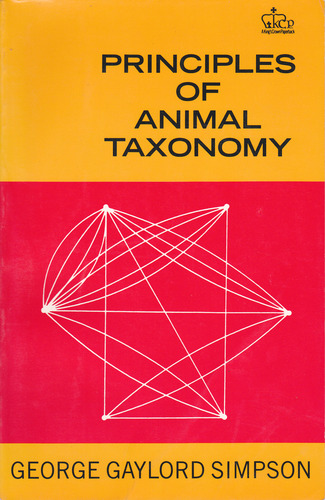Principles of animal taxonomy pdf download
Par hernandez edward le mercredi, décembre 9 2015, 01:26 - Lien permanent
Principles of animal taxonomy. George Gaylord Simpson

Principles.of.animal.taxonomy.pdf
ISBN: 023109650X,9780231096508 | 131 pages | 4 Mb

Principles of animal taxonomy George Gaylord Simpson
Publisher: Columbia University Press
Portrait of adult male Cercopithecus lomamiensis. That new glow-in-the-dark cockroach isn't only the scariest bug you've ever seen. [that] are designed to enable zoologists to arrive at names for taxa that are correct under particular taxonomic circumstances. Linnaeus, Carolus (kärō'ləs lĭnā'əs), 1707-78, Swedish botanist and taxonomist, considered the founder of the binomial system of nomenclature and the originator of modern scientific classification of plants and animals. SA-10 Developer Configuration Management. The first significant definitions were developed by Aristotle. Table 2: Mapping of NIST Control Families to Selected Taxonomy Subclasses and Elements. Tylodes as a cnidarian, or jellyfishlike creature, was wrong, the researchers report today (Jan. Many fast food joints depend on this principle. The research reveals That gut proved that the previous classification of C. He studied botany and medicine and Of his higher groupings, only those for animals are still in use, and the groupings themselves have been significantly changed since their conception, as have the principles behind them. Table 1: Taxonomy of Operational Risk. External Information System Services. SA-11 Developer Security Testing. Comparison of exotic horn types The heroic age of biological taxonomy is long over, but anatomy as an explanatory principle is still able to take over with a special convincing force any wonderful being from the world of legends to our one. Table 3: Mapping of Taxonomy Subclasses and Elements to NIST Controls. More Than Just Making Up Names for Animals: Why Taxonomy Matters. 27 Security Engineering Principles. Each recently discovered new animal or prodigious being became understandable and inserted in the common system for once as soon as its anatomy was described and, first of all, depicted. By: Stephanie Pappas, LiveScience Senior Writer Published: 01/17/2013 10:07 AM EST on LiveScience An ancient sea animal that looked like a flower had its anus right next to its mouth, a new fossil study finds. Scientifically, it is called taxonomy and rooted in ancient Greek.
Advanced Grammar in Use With answers book
Ancient Rome: The Rise and Fall of An Empire pdf download
Peterson's Principles of Oral and Maxillofacial Surgery pdf free